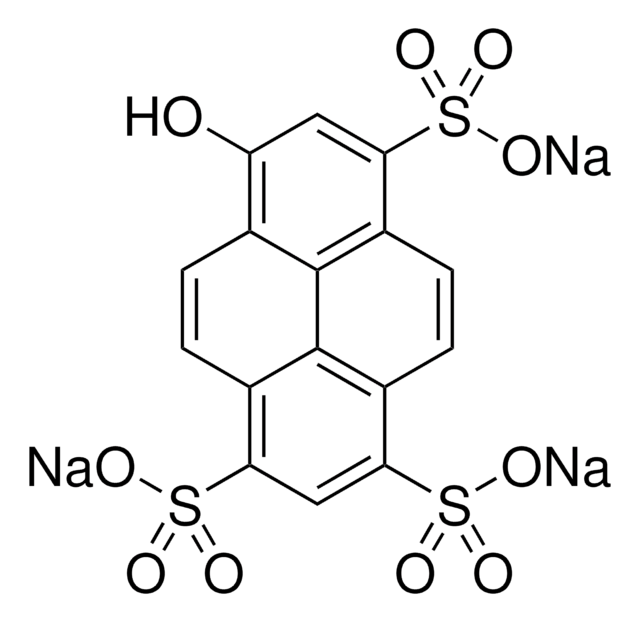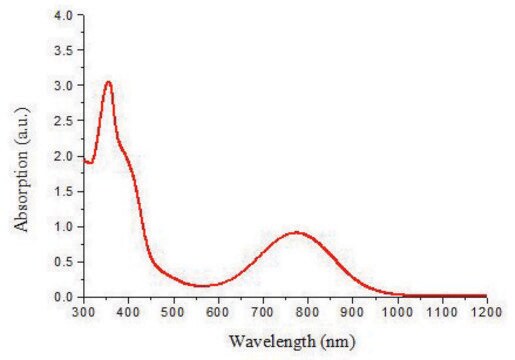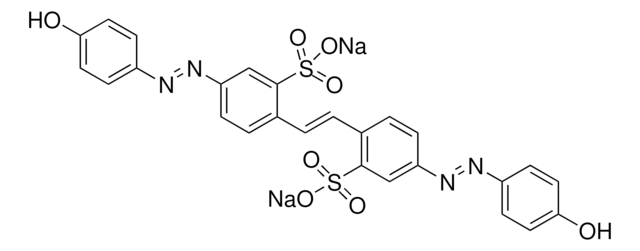Key Documents
206865
Primuline
Dye content 50 %
Synonim(y):
Direct Yellow 59, Primuline Yellow
About This Item
Polecane produkty
Postać
powder or crystals
Poziom jakości
skład
Dye content, 50%
mp
>300 °C
λmaks.
229 nm (2nd)
340-355 nm
Zastosowanie
diagnostic assay manufacturing
hematology
histology
temp. przechowywania
room temp
ciąg SMILES
[Na+].Cc1ccc2nc(sc2c1S([O-])(=O)=O)-c3ccc4nc(sc4c3)-c5ccc(N)cc5
InChI
1S/C21H15N3O3S3.Na/c1-11-2-8-16-18(19(11)30(25,26)27)29-21(24-16)13-5-9-15-17(10-13)28-20(23-15)12-3-6-14(22)7-4-12;/h2-10H,22H2,1H3,(H,25,26,27);/q;+1/p-1
Klucz InChI
RSRNHSYYBLEMOI-UHFFFAOYSA-M
Szukasz podobnych produktów? Odwiedź Przewodnik dotyczący porównywania produktów
Zastosowanie
Działania biochem./fizjol.
Kod klasy składowania
11 - Combustible Solids
Klasa zagrożenia wodnego (WGK)
WGK 3
Temperatura zapłonu (°F)
Not applicable
Temperatura zapłonu (°C)
Not applicable
Środki ochrony indywidualnej
Eyeshields, Gloves, type N95 (US)
Wybierz jedną z najnowszych wersji:
Masz już ten produkt?
Dokumenty związane z niedawno zakupionymi produktami zostały zamieszczone w Bibliotece dokumentów.
Klienci oglądali również te produkty
Nasz zespół naukowców ma doświadczenie we wszystkich obszarach badań, w tym w naukach przyrodniczych, materiałoznawstwie, syntezie chemicznej, chromatografii, analityce i wielu innych dziedzinach.
Skontaktuj się z zespołem ds. pomocy technicznej













